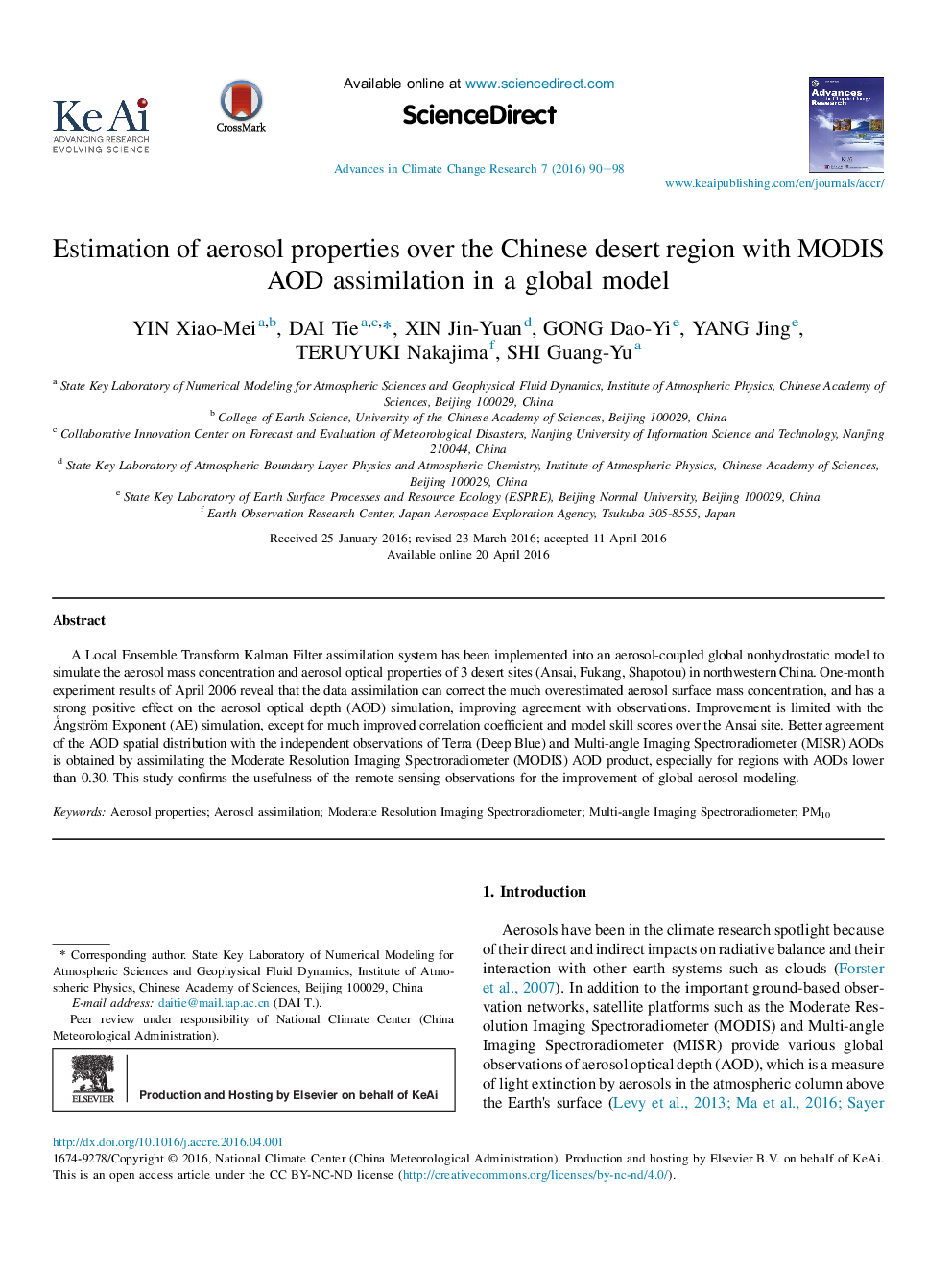| Article ID | Journal | Published Year | Pages | File Type |
|---|---|---|---|---|
| 4673522 | Advances in Climate Change Research | 2016 | 9 Pages |
A Local Ensemble Transform Kalman Filter assimilation system has been implemented into an aerosol-coupled global nonhydrostatic model to simulate the aerosol mass concentration and aerosol optical properties of 3 desert sites (Ansai, Fukang, Shapotou) in northwestern China. One-month experiment results of April 2006 reveal that the data assimilation can correct the much overestimated aerosol surface mass concentration, and has a strong positive effect on the aerosol optical depth (AOD) simulation, improving agreement with observations. Improvement is limited with the Ångström Exponent (AE) simulation, except for much improved correlation coefficient and model skill scores over the Ansai site. Better agreement of the AOD spatial distribution with the independent observations of Terra (Deep Blue) and Multi-angle Imaging Spectroradiometer (MISR) AODs is obtained by assimilating the Moderate Resolution Imaging Spectroradiometer (MODIS) AOD product, especially for regions with AODs lower than 0.30. This study confirms the usefulness of the remote sensing observations for the improvement of global aerosol modeling.
